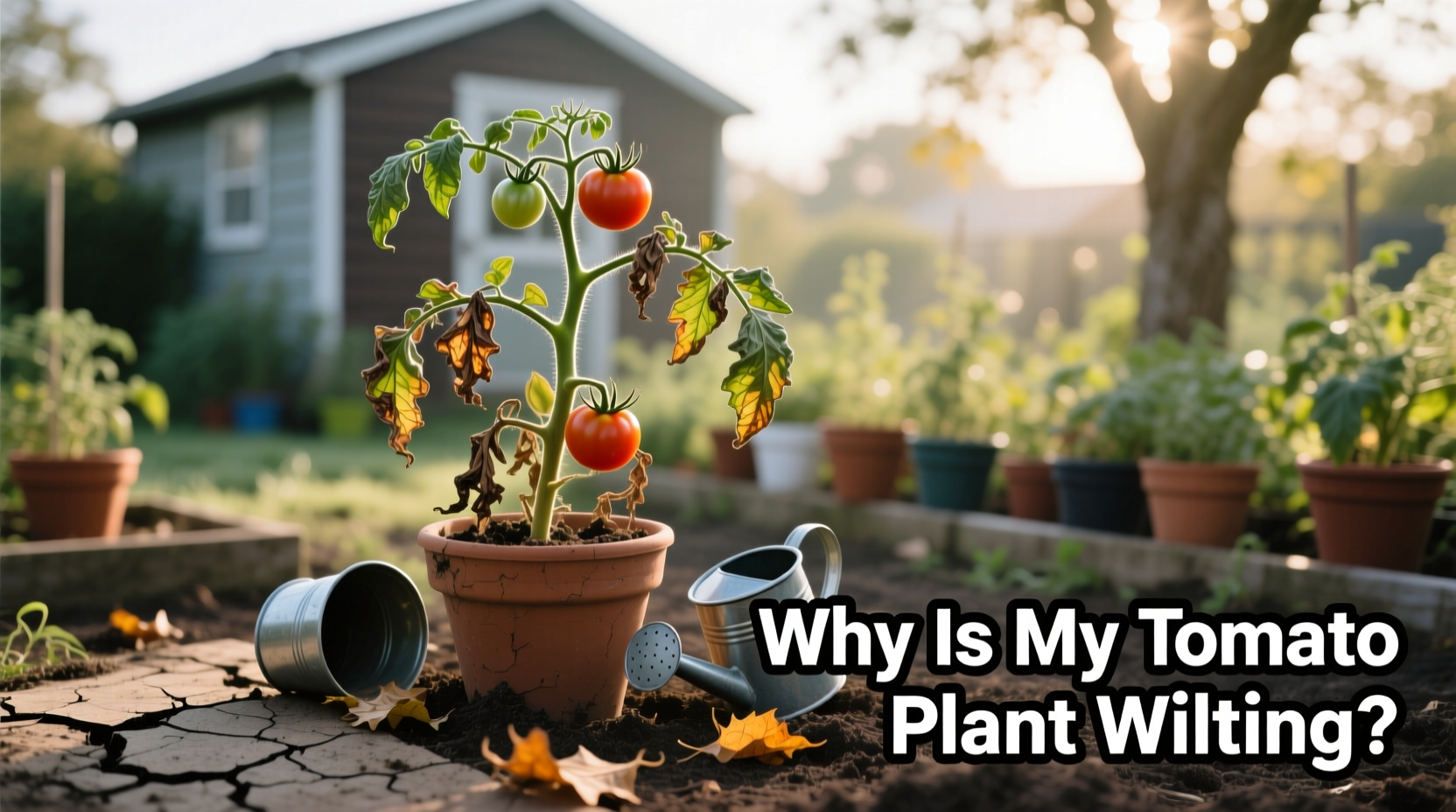Nothing ruins a gardener's summer faster than watching healthy tomato plants suddenly droop and wilt. When you notice your tomato plant wilting, your first thought should be watering issues—both under and overwatering cause identical symptoms. Approximately 70% of wilting cases stem from improper moisture management, according to the University of California Master Gardener Program. Before panicking about diseases, perform this quick diagnostic check that takes less than five minutes.
Step 1: The Critical First Check (Water Assessment)
Grab a trowel and dig 4-6 inches into the soil near your wilting plant. The ideal moisture level feels like a damp sponge—not dripping wet, but holding together when squeezed.
| Soil Condition | Wilting Pattern | Immediate Action |
|---|---|---|
| Dry and crumbly | Leaves droop during hottest part of day | Deep water immediately (1-2 inches), mulch heavily |
| Soggy and sticks to fingers | Wilting occurs even in cool morning hours | Stop watering, improve drainage, check roots for rot |
| Moist but compacted | Gradual wilting over several days | Aerate soil, add organic matter, water deeply but less frequently |
Step 2: Disease Identification Timeline
Fungal and bacterial diseases follow predictable progression patterns. Use this timeline to identify your specific problem:
- Day 1-2: Lower leaves show slight yellowing at edges
- Day 3-4: Wilting begins on one side of plant or specific branches
- Day 5-7: Brown streaks appear inside stems when cut open
- Day 8+: Complete plant collapse despite adequate watering
This progression indicates fusarium wilt or verticillium wilt, soil-borne fungi affecting 30% of home tomato gardens according to University of Minnesota Extension. Unlike watering issues, these diseases cause permanent vascular damage that prevents water transport.

Step 3: Targeted Solutions Based on Cause
Water-Related Wilting Fixes
For underwatered plants: Water deeply at soil level (not leaves) early morning. Apply 2-3 inches of straw mulch to retain moisture. For overwatered plants: Stop irrigation immediately, improve drainage by adding perlite or compost, and prune affected foliage to reduce stress.
Disease Management Strategies
Unfortunately, no cure exists for fusarium or verticillium wilt once symptoms appear. Your immediate actions should include:
- Remove severely affected plants completely (roots and all)
- Disinfect tools with 10% bleach solution
- Rotate crops for 3-4 years before planting tomatoes again
- Choose resistant varieties labeled "VF" or "VFN" for future plantings
Other Common Culprits
Bacterial wilt: Sudden collapse with green leaves, often after hot weather. Confirm by cutting stem—milky white ooze indicates infection. Solution: Remove plant immediately; no recovery possible.
Root knot nematodes: Swollen, knotted roots visible upon inspection. Solution: Solarize soil or plant marigolds as companion plants.
Tomato spotted wilt virus: Purple or brown rings on leaves with downward curling. Solution: Control thrips (the vector) with insecticidal soap.
Preventing Future Wilting Problems
Implement these proven prevention strategies before planting season:
- Test soil drainage: Dig hole, fill with water—if it takes more than 10 minutes to drain, amend soil
- Use drip irrigation instead of overhead watering to keep foliage dry
- Space plants 24-36 inches apart for proper air circulation
- Apply 3-inch mulch layer after soil warms to regulate moisture
- Choose disease-resistant varieties appropriate for your climate zone
When to Accept Loss and Move On
Some situations make plant recovery impossible. According to Oregon State University Extension, abandon treatment efforts when:
- More than 50% of the plant shows vascular browning
- Multiple plants in the same area show identical symptoms
- Soil has tested positive for persistent pathogens
- Wilting continues despite perfect moisture management for 72 hours
Focus your energy on prevention for next season rather than fighting a losing battle with infected plants.











 浙公网安备
33010002000092号
浙公网安备
33010002000092号 浙B2-20120091-4
浙B2-20120091-4